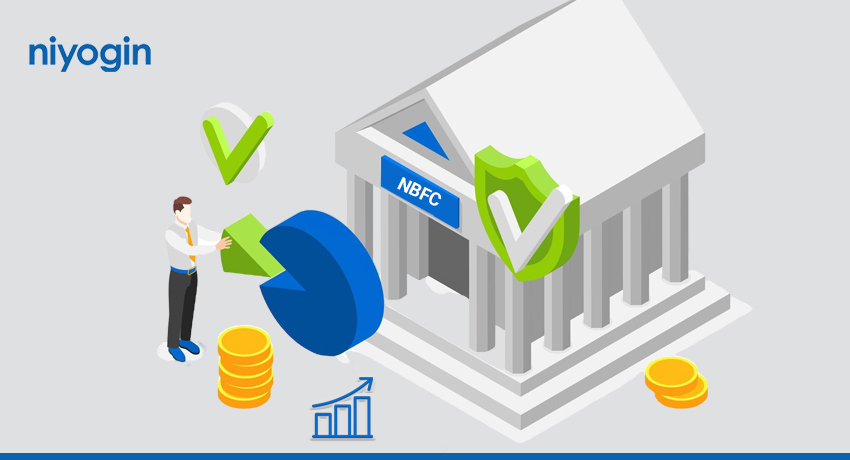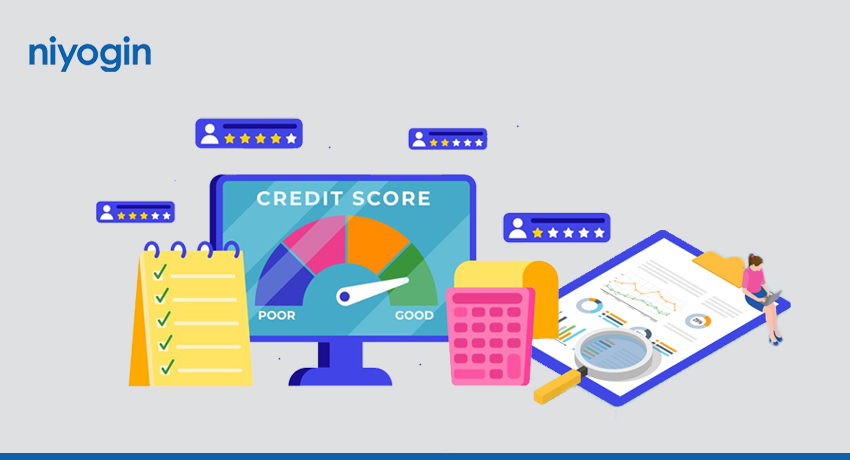Decentralized finance, or DeFi, isn’t just a tweak to the financial system; it’s a seismic shift shaking the very foundations of traditional finance. Imagine a world where financial transactions are not governed by banks or brokerage firms but instead are transparent, accessible, and autonomous. DeFi makes this vision a reality by implementing the power of blockchain technology, creating a borderless financial playground where individuals have full control over their assets. No longer bound by intermediaries, people can dive into a plethora of financial activities, from lending to trading, without needing anyone’s permission. This liberation not only democratizes finance but also sparks a wave of innovation, giving rise to a dazzling array of decentralized applications (dApps) that cater to diverse financial needs. With DeFi, the promise of inclusivity and efficiency is within reach, heralding a new era where anyone, anywhere, can engage in a truly global and decentralized financial system. Application and Usage DeFi leverages advancements in software, hardware, connectivity, security protocols, and peer-to-peer financial networks. Banks and other financial service providers are eliminated by this system. These businesses charge both consumers and businesses for the use of their services, which are essential to the functioning of the current system. By utilizing blockchain technology, such as Ethereum and Binance Smart Chain ecosystem, DeFi can lessen the requirement for these middlemen. Secondly, DeFi platforms are interconnected through standardized protocols and interoperable interfaces, allowing users to seamlessly navigate between different applications and services. This interoperability fosters innovation and liquidity within the DeFi ecosystem. Many DeFi platforms also embrace community-driven governance models, empowering users to participate in protocol decision-making and vote on proposed changes or upgrades. This decentralized governance ensures transparency, accountability, and resilience against centralized control or manipulation. Roadmap and Growth Opportunities The Indian government’s push towards a cashless economy presents significant growth opportunities. The recent approval of the First Loss Default Guarantee (FLDG) underscores the effectiveness of the bank-fintech partnership model in digital lending. According to Statista, the number of users in the Indian DeFi market is expected to reach 6.26 million by the year 2028. This rapid growth underscores the increasing acceptance and integration of DeFi into mainstream financial systems. Globally, the total value locked (TVL) in DeFi protocols has skyrocketed, reaching over $100 billion in 2023, a testament to the sector’s explosive growth. As decentralized finance continues gaining momentum, its potential to redefine the fabric of global finance becomes increasingly evident. Each day, more individuals join this groundbreaking movement, contributing to its growth and evolution. The journey towards a truly decentralized financial system is not without challenges, but the rewards are immense. As we look ahead, the possibilities are boundless, with DeFi poised to democratize access to financial services, drive innovation, and empower individuals worldwide.
Month: September 2024
Challenges and Opportunities for NBFCs in India
A potentially rich environment of opportunities and challenges arises in the complex world of NBFCs in India. Functioning as essential elements of the country’s financial system, NBFCs are at the intersection of innovation, risk, and socioeconomic dynamics, ready to spark development and wealth. But they face a host of challenges in the face of rapidly evolving regulations, technological advancements, and macroeconomic swings, from liquidity issues to governance conundrums. However, behind these obstacles are opportunities for them to rethink their mission, embrace flexibility, and develop inclusive financial solutions that go beyond conventional norms. This prompts a profound inquiry: how can NBFCs navigate the uncertain path ahead, utilizing adversity as a catalyst for innovation, and forging a trajectory where challenges evolve into stepping stones towards enduring success? Challenges for NBFCs in India 1. Keeping up with the Regulations – NBFCs in India operate within a rigorous regulatory framework established by the Reserve Bank of India. While these regulations are essential for safeguarding financial stability, they can be seen as constraining by NBFCs. Moreover, changes in regulatory policies or the introduction of new guidelines often necessitate swift adaptation, requiring NBFCs to invest in technology and enhance their compliance infrastructure. The intricate and dynamic nature of these regulations necessitates continuous vigilance and proactive measures from NBFCs, influencing their strategic planning and resource allocation decisions. 2. Funding and Liquidity Management – NBFCs heavily rely on external funding for their lending activities, unlike traditional banks that utilize customer deposits. They depend primarily on borrowing from banks, issuing bonds, or obtaining loans from financial institutions. Securing sufficient funding can be especially challenging during economic downturns or periods of financial instability, leading to higher borrowing costs and restricted access to credit. This directly impacts their liquidity and ability to expand operations. Effective liquidity management is crucial for NBFCs to meet financial obligations such as loan repayments and regulatory compliance. Balancing various funding sources, managing liquidity effectively, and sustaining profitability are ongoing challenges for NBFCs in India. Opportunities for NBFCs 1. Explore Niche Markets – NBFCs can succeed by discovering and targeting specific markets. This could include sectors such as microfinance, where small loans are provided to individuals or businesses who typically lack access to traditional banking services. For this, NBFCs may offer small loans with flexible repayment terms to support the financial needs of entrepreneurs and small businesses. NBFCs can concentrate their resources and efforts on developing expertise in particular industries by concentrating on those. This would include investing in staff training, creating customized underwriting models, and establishing partnerships with stakeholders in the sector. 2. Co-lending opportunities – Collaboration with banks through co-lending arrangements, as approved by the RBI, can be a win-win situation. By working together to increase liquidity, NBFCs can expand their lending portfolios without overburdening their balance sheets. Additionally, co-lending agreements allow the parties to share risks, reducing individual exposure and increasing portfolio diversification. These partnerships give NBFCs access to a steady stream of funding and opportunities for strategic expansion and market share. Co-lending agreements, taken as a whole, enable NBFCs to maximize lending operations, cultivate resilience, and seize new opportunities in the ever-changing financial landscape. 3. Digital Transformation – NBFCs use data analytics to make well-informed decisions rapidly and accurately, ranging from the digitization of loan origination and underwriting processes to the integration of AI-powered credit scoring models. Additionally, they are revolutionizing customer engagement through digital channels such as mobile apps and online platforms, providing seamless experiences for tasks like account management, payments, and support services. They are also strengthening cybersecurity measures to protect sensitive information and transactions, thereby fostering trust and reliability amongst users in the digital domain. NBFCs in India find themselves at a critical juncture, grappling with regulatory challenges and fierce market competition while also being presented with promising avenues for growth. In navigating this landscape, it becomes imperative to foster robust coordination and engagement among regulators, fintech enterprises, traditional financial institutions, and other relevant stakeholders.
The Impact of Open Banking on consumer finance
Open banking is reshaping the financial landscape by revolutionizing how consumers interact with their banks and financial services. Greater openness, competition, and innovation are being promoted by this revolutionary approach to banking, which resulted from changes in regulations and technical breakthroughs. Open banking is fostering the development of a more vibrant and diverse financial ecosystem by permitting third-party providers to access financial data with consumer authorization. Increased Openness in Finance The rise in financial transparency is one of open banking’s most important effects. Because they can now have a more complete picture of their financial information, consumers are better equipped to make judgements. A survey published by Accenture states that new financial services enabled by open banking are of interest to 57% of worldwide consumers. This transparency also extends to more efficient comparison of financial goods and services, since open banking platforms frequently compile information from various accounts to present a cohesive picture of one’s financial situation. Increased Innovation and Competition By enabling new fintech businesses and third-party suppliers to enter the market, open banking promotes competition. As a result of the increased competition, innovative financial products and services that are suited to the demands of customers are developed. According to research by the UK’s Financial Conduct Authority (FCA), the number of fintech businesses entering the market increased by 30% after open banking policies were put into place. Personalized financial management tools, improved credit score algorithms, and creative payment methods are some of these advancements. Enhanced Credit Accessibility Through the provision of more thorough and accurate financial information to lenders, open banking greatly improves consumers’ access to credit. Customary credit scoring algorithms frequently depend on sparse data, which may omit people with weak credit histories. More data, such as transaction histories and spending habits, are available to lenders through open banking, which helps them create more precise credit evaluations. According to a Deloitte research, the use of open banking by 60% of lenders resulted in better credit risk assessments and lower loan default rates. Enhanced Security and Consumer Control Robust safeguards are established to protect customer data, ensuring that security and control remain top priorities in open banking. Regulations such as the UK’s Open Banking Initiative and the EU’s PSD2 (Payment Services Directive 2) enforce stringent data security standards. Consumers have the autonomy to select which third-party providers can access their data and can revoke this access at any time. According to a survey by the Open Banking Implementation Entity (OBIE), 87% of consumers feel confident about the security of their data within open banking environments. Challenges and Future Outlook While open banking offers numerous benefits, it also presents challenges, including data privacy concerns and the need for robust cybersecurity measures. As the open banking ecosystem evolves, ongoing efforts are required to address these issues and ensure a secure and equitable financial environment. Looking ahead, the impact of open banking is expected to grow, with more countries adopting similar regulatory frameworks and technological advancements.
Credit Scoring and Risk Assessment in Digital Lending
Technology’s increasing pervasiveness and the growing call for financial inclusion are driving a rapid transformation of the Indian lending sector. The crucial roles of credit scoring and risk assessment are at the center of this evolution. After relying primarily on credit bureau data for a long time, the industry is now adopting a new paradigm that includes advanced analytics and alternative data sources in order to better assess borrowers. This shift is driven by several factors, including: From Traditional to Transformative A pivotal shift is underway, marked by the increased adoption of alternative data sources such as mobile phone usage, social media activity, and utility bill payments. These data, combined with the power of advanced analytics and machine learning, are enabling the development of more sophisticated credit scoring models that can accurately assess the creditworthiness of a broader population, including those with limited credit history. Regulatory initiatives like the RBI’s regulatory sandbox are fostering innovation by providing a controlled environment for lenders to experiment with new technologies and data sources. Moreover, the rise of open banking is facilitating the seamless sharing of customer data between banks and fintech companies, enriching the data pool available for credit assessment and ultimately enhancing the overall lending ecosystem. These trends are expected to make credit scoring and risk assessment in India more accurate, efficient, and inclusive. This will not only benefit lenders by reducing their risk of bad loans but also benefit borrowers by making it easier for them to access credit. As the industry continues to evolve, it is imperative to strike a balance between innovation and responsible lending. Robust data privacy and security measures, coupled with ethical considerations, will be paramount in building a sustainable and trustworthy credit ecosystem. The future of lending lies in the intelligent and responsible utilization of data to empower both borrowers and lenders.



